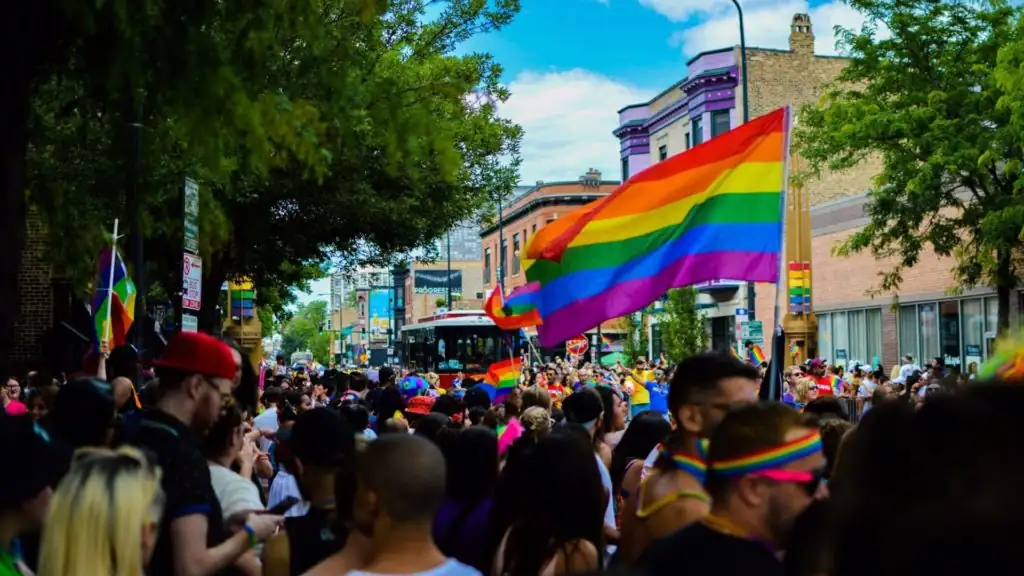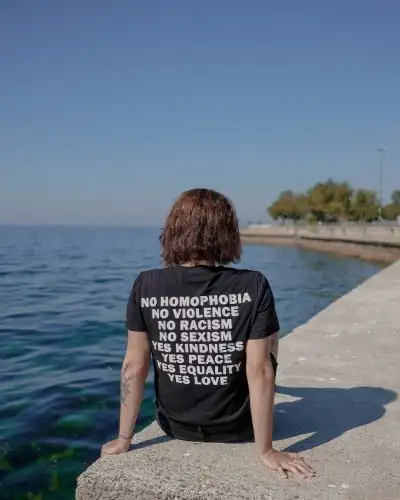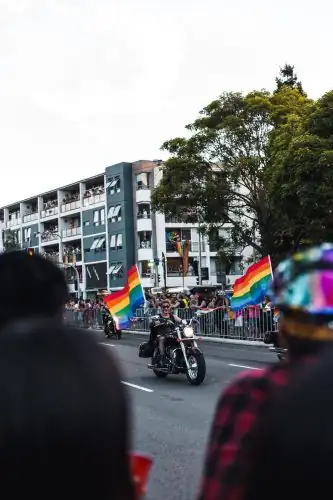
As we head into Pride Month, you’re more likely than ever to see big brands bringing out the rainbow colours to try and appeal to LGBTQ+, or allied, consumers. But is this practice really effective as a marketing tactic? And is it helpful for normalising LGBTQ+ representation within advertising and marketing?
‘Rainbow-washing’ or ‘Pride-washing’ has become a hot-button topic in the past few years. Many brands have been accused of, or called out for, the practice, experiencing backlash as a result. Avoiding hopping on the bandwagon of the Pride celebration and engaging with LGBT+ consumers in a more meaningful way is more vital than ever!
What Is Rainbow-washing?
But first, what is rainbow-washing or pride-washing?
At its most broad definition, rainbow-washing is when a company uses rainbow or LGBTQ+ imagery in advertising to indicate support for LGBTQ+ equality, without actually doing anything pragmatic to support LGBTQ+ equality or engaging with the community authentically.
The most obvious examples of this take place in June, which is the internationally recognised Pride Month. Companies often change their logos on social media to bright rainbow versions or use rainbow colours in their advertising and feeds. In some cases, they may allude to supporting LGBTQ+ organisations, without demonstrating how they’ve materially supported them. And when the first of July rolls around and LGBT+ issues are no longer trendy, these images and content instantly disappear.

Why Does Inclusive Marketing Matter?
LGBTQ+ consumers represent a large potential customer base, and they’re hungry for marketing and advertising that represent them fairly and authentically. 1 in 10 millennials and nearly 1 in 6 gen-z’s identify as lesbian, bi, gay, trans, or queer, according to the latest study from Gallup.
LGBTQ+ people also have a lot of spending power, with market research company LGBT-Capital estimating the community has a global buying power of $3.7 trillion dollars. Even outside of the community, inclusive advertising strongly appeals to consumers, with 61% of consumers wanting to see diversity in advertising. And in another survey, 34% of respondents said they have boycotted a company at least once because they don’t feel their identities were represented in the companies’ actions!
What Does Rainbow-Washing look like?
It can sometimes be difficult to tell the difference between ‘rainbow-washing’ and genuine corporate pride initiatives. Some of the potential signs that a company may be engaging in rainbow-washing include:
- They only launch Pride or LGBTQ+-inclusive initiatives and schemes during the month of June
- They use their LGBTQ+ team members as props in content
- They run pride campaigns while contributing to anti-LGBTQ+ organisations or public figures
- They only change their logos temporarily
- They have corporate groups marching in parades, especially if they do this while lacking LGBTQ+ staff networks
- They foster unsafe or unwelcoming workplaces for LGBTQ+ staff members
- They underpay the LGBTQ+ talent within their companies or who have been hired to work on their pride campaigns
- They run for-profit LGBTQ+ schemes or collections that don’t donate to LGBTQ+ causes
Why is Rainbow-Washing Damaging?

Using a rainbow logo to gain LGBTQ+ consumers’ support without doing anything to back it up can be considered a form of appropriation. The rainbow flag has a long rich history, and using it for marketing content without meaningfully engaging with the communities it represents can be perceived to “cheapen” the meaning of pride.
Additionally, “rainbow-washing” can be perceived to trivialise the struggles and experiences of the LGBTQ+ community by reducing them to mere marketing gimmicks. It erases the historical and ongoing fight for equality, respect, and acceptance
Because of this lack of authenticity, LGBTQ+ consumers often ‘call-out’ or create backlash to companies percieved as rainbow-washing. As well as the ethical issues associated with the practice, it carries risks around brand perception.
Alternatives To Rainbow-Washing: Authentic Inclusion
If rainbow-washing isn’t an effective way to connect with LGBTQ+ consumers and audiences, what is?
Genuine inclusion means promoting diversity throughout an organisation, creating inclusive policies and practices, and supporting causes that uplift marginalised communities. In the case of LGBTQ+ inclusion, this could look like:
- Including LGBTQ+ representation in marketing outside of Pride Month
- Working directly with LGBTQ+ creators (such as influencers) and organisations, in order to both create marketing that represents these groups authentically and benefits LGBTQ+ communities materially
Additionally, while rainbow-washing may offer a temporary visibility boost, it often fails to create a lasting impact or address the underlying issues faced by marginalised communities. More authentic marketing can build lasting relationships with and brand loyalty to LGBTQ+ consumers, but it also helps to mainstream LGBT+ communities and identities.